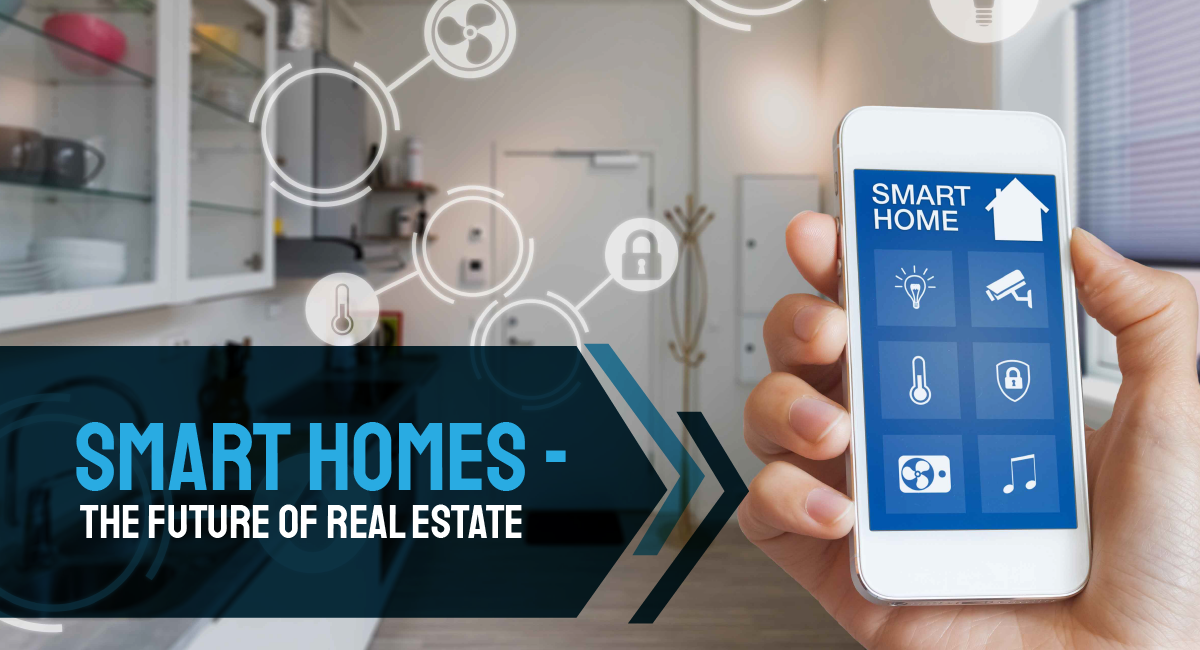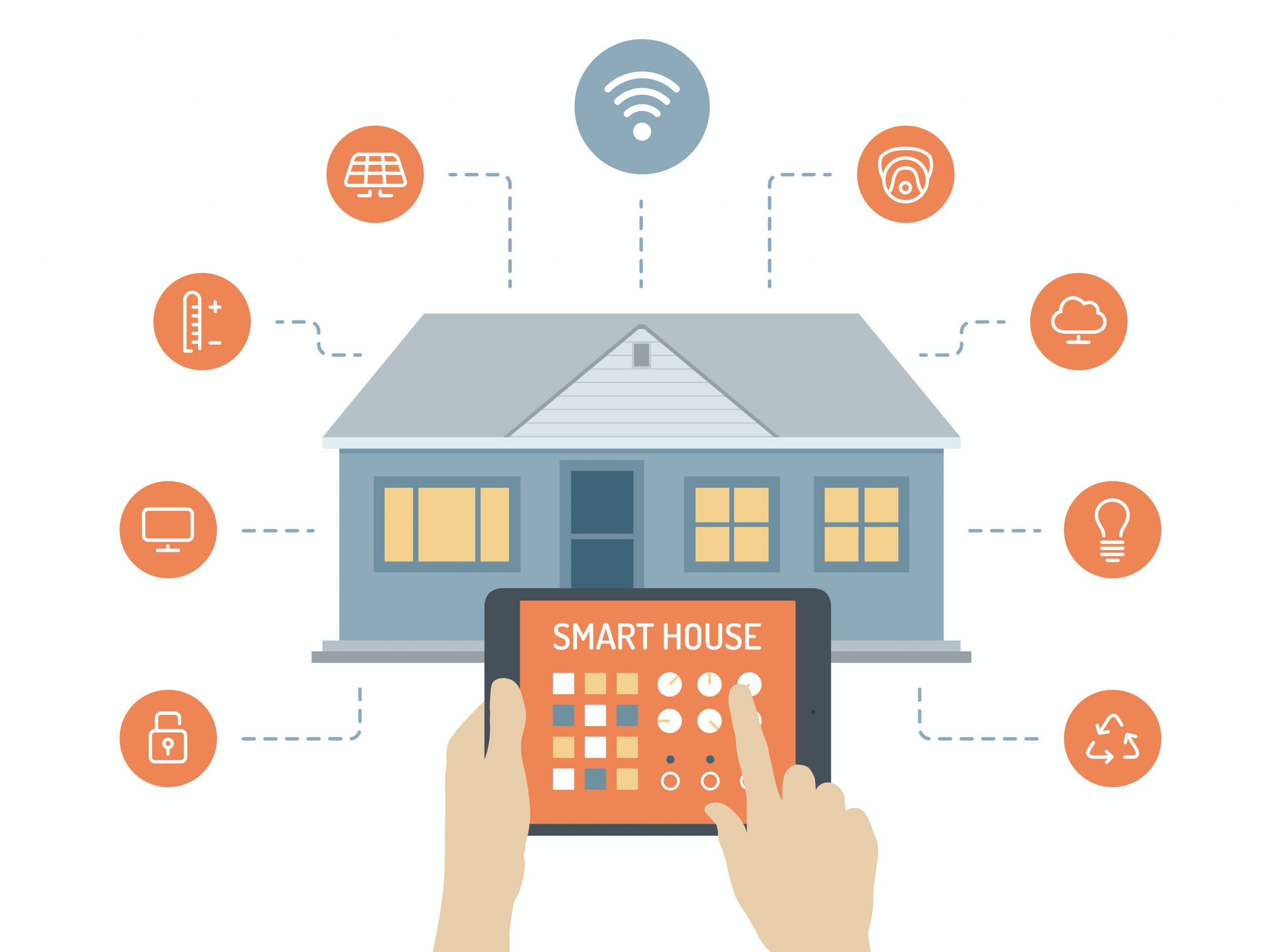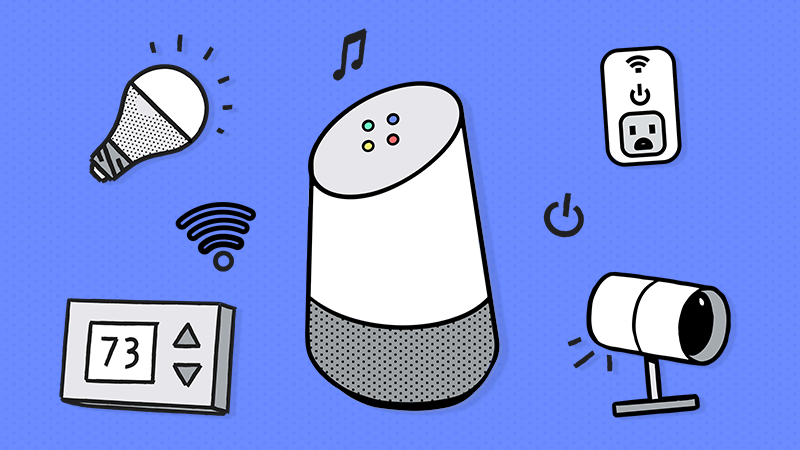What is a Smart Home?
A “smart home” is the name for a home network that uses the internet to connect your appliances and devices and control them with a smartphone or tablet. Any appliance or device that uses electricity can be connected to a wireless or hardwired smart home system.
A smart home system is most often used to run basic lighting, home security, a thermostat, and home theatre and entertainment systems. However, the sky is the limit for many other uses.


Here are just a few things a smart system can do:
- Open house door locks and garage doors automatically as your smartphone approaches
- Use smart doorbells to allow you to see and communicate with people who come to your door, even when you're not home
- Use cameras to track your home's exterior, even if it's pitch-black outside
- Use motion sensors to send an alert when there's movement around your house, which also know the difference between pets and burglars
- Send alerts from your security system to your smartphone
- Work with a fire alarm to unlock doors, dial the fire department and light a path to safety
- Control video camera monitors
- Adjust the colour and brightness of LED lights
- Light the hallway for nighttime bathroom trips
- Create runtime schedules for individual appliances and devices
- Feed your pets on a schedule with a preset amount of food
- Program your television so your kids can watch only at certain times
- Warm the bedroom before you get out of bed
- Turn on the coffee maker
The Advantages of Smart Homes
Convenience
Smart home technology allows you to conveniently control your appliances and devices using a smartphone or tablet from wherever you are, inside or outside the house. You can also keep track of what’s going on in your house through notifications and updates while you’re away.
Energy Efficiency
When appliances and devices are set up with timers and schedules to turn them on and off, they become more energy-efficient and cost-effective. Lights can be set to turn off automatically when no one is in the room, and heat or air conditioning can be adjusted for the people in the room at any given moment. Some smart devices can track how much energy each appliance uses and adjust power-hungry appliances to reduce energy consumption.
Helping the Elderly and People Living with a Disability
Smart technology promises tremendous benefits for an elderly person living alone in their own house. Smart technology could remind them when it's time to take medicine, alert a hospital if they fall, and track how much they’re eating. If an elderly person is a little forgetful, the smart system could perform essential tasks like shutting off the water before a tub overflows or turning off the oven if they wander away from the kitchen.
Smart technology could also allow adult children living elsewhere to participate in the care of their aging parent by receiving notifications and updates. Similarly, these automated systems could provide benefits to people living with disabilities or a limited range of movement.

The Disadvantages of Smart Homes
Security Risks
Security risks and bugs continue to be a problem for smart home technology. There is the potential for hackers to gain access to your home internet network and turn off alarm systems and lights or turn devices on and off rapidly, which could ruin some electronics and possibly cause a fire. In order to mitigate these risks, you should use a strong, encrypted password and only connect trusted devices to your network.
Initial Setup and Ongoing Maintenance
Sometimes a smart home system is too complicated or frustrating to be very useful. The technology requires a significant time investment to learn how it works and to keep it working efficiently or properly, which might negate any convenience you might hope to achieve with it.
High Cost
If you build your smart home system gradually, perhaps starting with a basic lighting system, you might only be spending a few hundred dollars. However, if you are considering a sophisticated system, the costs can run anywhere from a few thousand dollars for a wireless system to tens of thousands of dollars for a hardwired system.
No Universal Standards
Because there are so many brand-new technological advances in this area, there's still no standard system for automating everything. Without universal regulations, many consumers wonder if they're buying products that will become obsolete or unusable in a few years.
The House
Explore the different components of the house.

